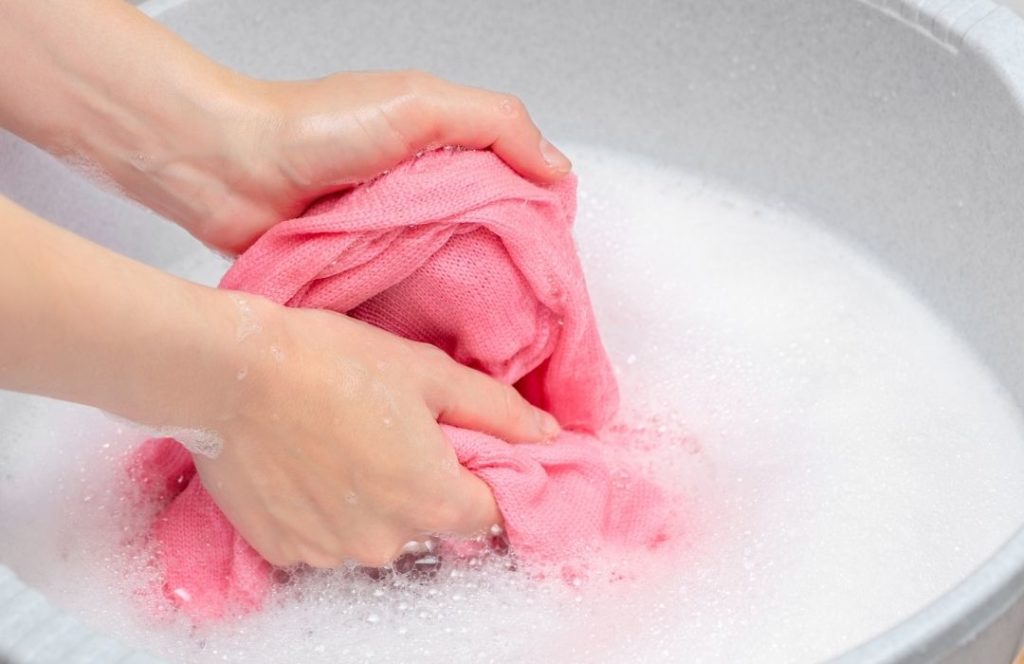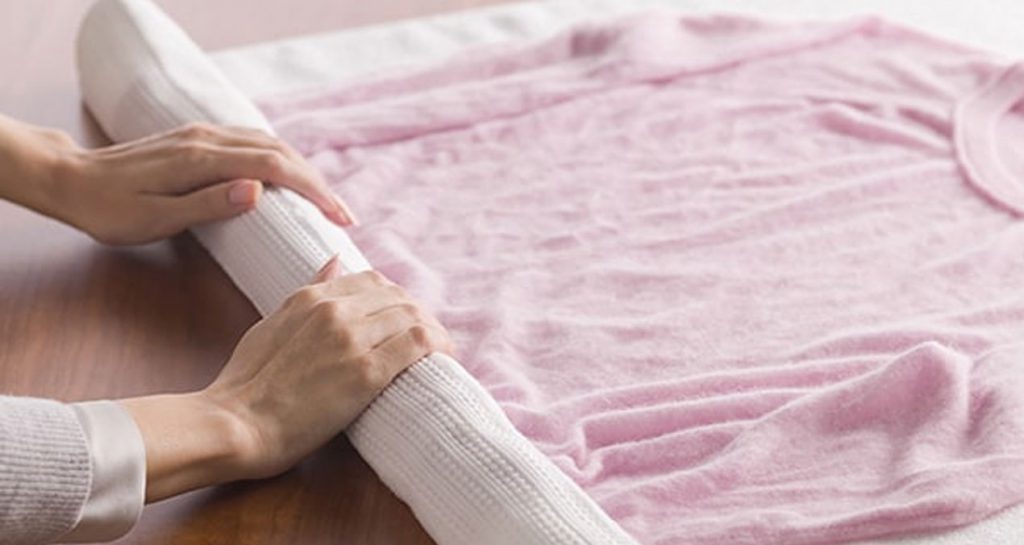Pashmina - the word even sounds luxurious. A symbol of culture as well as elegance, Pashmina is the fine art that has enthralled royalty and commoners alike. The word Pashmina came into existence in the 15th century, when it was derived from the Persian word ‘Pashm’, which means soft gold. Pashmina shawls were so luxurious that all one wanted was to keep it safe as a precious treasure. But being wearable it has to be cleaned, and washing Pashmina became a task.
What is Pashmina?
Pashmina is the fine art of converting raw Cashmere to the luxury fabric. To know the prominence and reputation of this art, we have to know about Cashmere. Cashmere is a variety of goat hair, which grows over the body of a rare species of goats found in the Himalayan range. It is one of the softest, smooth, fine, and delicate types of wool that the world has ever seen. The goat sheds this wool naturally during its moulting period, which begins in spring. This is collected by its herders and sent for processing. Processing begins with cleaning the wool, sorting it, spinning it to yarn, and hand weaving yarn to convert it to fibre. The fibre can then be transformed into apparel, wraps, scarves, socks, and other accessories.
Why is Pashmina special?
Processing Cashmere is not an easy task. This is because Cashmere is exceptionally fine, gauzy, and lightweight. The yarn has a diameter of just 12 - 16 microns, and a large cardigan made of Cashmere weighs hardly 700 grams. This makes the handling of Pashmina products pretty delicate, especially its washing, drying, storage, and more. If treated in a harsh manner, this fine wool type has a 100% chance of getting ripped, and this damage is simply irreversible.
Washing Pashmina
Washing Pashmina shawls or scarves is a pretty difficult task. One can lose it permanently if proper care isn't taken of this delicate baby. So how do we wash it? Is Pashmina washable? Do we wash it ourselves, or get it washed professionally? Here are the answers to these questions:
Women usually get nightmares when thinking about losing their precious shawl to a vigorous wash. What if it shrinks, or gets damaged? What if it pills too much, and doesn't keep one warm again? The questions haunt the owners, and they seek professional help. We being the harbingers of pure, original Pashmina shawls and scarves bring you the professional help you seek.
Our fabric experts came up with several methods of washing Pashmina and pauperized several myths relating to the cleaning of Pashmina. Let's answer the most basic question first.
Is Pashmina Washable?
Yes, you can wash Pashmina, and that too at your home, comfortably. And because this is the best way to keep your Pashmina clean, the market is flooded with Pashmina shampoos (also called Cashmere shampoos) to carry this task out. Here is what to do.

- Pour Cashmere shampoo into a tub of lukewarm water.
- Soak your Pashmina into this soapy solution.
- Let it rest there for 30 minutes.
- After 30 minutes, gently remove it, and squeeze it between your hands.
- Do not wring, or you can deform it.
- Now rinse your shawl in cold water.
- Repeat till the soapy water is clear. Always squeeze your Pashmina between your hands. Make sure you are gentle with this delicate fabric.
Washing Pashmina in a Washing Machine

Machine washing a Pashmina might be thought of as the most inappropriate method of washing it. But that is not the fact. In fact, with proper precaution, machine washing is an effective method of cleaning a Pashmina shawl. Follow the following steps:
- Wrap the shawl in a mesh bag. This protects it from getting stuck anywhere.
- Set water to a cold or lukewarm temperature. Use the hand wash setting.
- Put the spin on low settings
- Wait for the required time.
- When the cycle completes, remove the shawl as soon as possible to prevent the formation of wrinkles
- Harsh machine washing will kill the fibre of Pashmina shawls, and you might lose it forever.
What after Washing?
Post washing precautions are equally important to keep Pashmina shawls fresh and new forever. These gossamer wraps should neither be dried out in the sun nor should they be hung. In fact, Pashmina should be air-dried, in shade. It should be laid flat on the floor and allowed to dry naturally. Here is the best way to dry a shawl made from Cashmere.

- Lay a towel on the floor, flat.
- Place your shawl over the towel.
- Roll the towel along with the shawl, so that it absorbs the excess water.
- Unroll it, and change the towel to a clean dry one. Let the shawl remain flat on this new dry towel, till it completely dries.
Cashmere should never be tumble-dried. It shouldn't be pulled for drying it. Nor should you use artificial heat to dry it. Pashmina wraps tend to get damaged because of heat. Even if your wrap takes a few days to dry, let it remain as such.
Also read: Does Cashmere shrink?
What if your scarf gets a stain?
Spot cleaning Pashmina shawls is a good method of getting rid of stains. For spot cleaning a stain on a Pashmina shawl, some recommend using dish soap on the spot and washing it with vinegar. But this might be a risky procedure. Hence we suggest you hand it to your laundry and check what kind of stain the shawl has gotten. Let professionals take care of it this time.
How often should Pashmina be washed?
Using or washing Cashmere regularly can damage the product forever. Wearing a Pashmina scarf or shawl should also be limited to certain occasions. Overuse is not for Pashmina. It is special and should be treated in the same way.
Washing your Pashmina shawl or scarf regularly will destroy it, and decrease its life. Pashmina shawls have to be washed once a season. As soon as the winter season is over, and hot summer starts, Pashmina should be washed, dried, and carefully stored for the next season.
How to store Pashmina?
How your Pashmina shawl wakes up for the next cold season, is fully dependent on the care you showed it this season. Its storage plays a crucial role in its care. Pashmina is delicate, and hence shawls and scarves made from Cashmere should be stored at squeaky clean places. Little moisture can become a breeding place for moth infestation, and as a result, your shawls will suffer destruction. Make sure the place is dry, clean, disinfected, and absolutely moisture-free.
Now, wrap your Pashmina shawl in a large tissue paper, or a muslin cloth. Never store Pashmina shawls and scarves in plastic. This can attract moisture, and end your precious wrap’s life in minutes.
Wash your Pashmina at the end of every season. As you wear it all winter and fall, the shawls catch body oils, food particles, dust, or any kind of dirt which is not visible enough. Hence, washing it at the end cleans it of all these contaminations and gives it a new life to serve you for the next cold season. Wash, dry, and store these delicate babies carefully with full precaution, so that you find them exactly the same warm, cozy and graceful the next season.
The symbol of elegance and traditional grace

The Kashmiri Pashmina shawl has been a status symbol since times immemorial. Other than being warm, expensive, and immensely elegant, Pashmina is well known to serve its owner for over 20 years. Hence, we too owe it a lot of care and concern, for being our companion for such a long time.
Always read the label of any woolen outfit. Be it Pashmina or sheep wool wraps and apparel, read what the label instructs. Know that it is not always necessary that if your label reads 'dry clean', it can't be washed at home. You can wash delicate wools at home, but with great caution and care. Only if the label says “do not wash”, you can't use water on it, and use professional help instead.
You are responsible for the life and newness of your shawl. Show it the proper TLC (Tender Loving Care), and it will show it back to you.
Also read: How do you Care for a Pashmina? | Essential Tips to keep Pashmina new forever